Hello all!
In this post I want to explain to to you how to photograph fireworks, and get night time shots that look awesome!
This is just for beginners, so if you already know this stuff, you are welcome to comment and give your own input, or move on to a more professional course :).
And my usual Disclaimer: I am not a professional photographer by any means, and I am still learning myself each day to get better at it, and I just hope to help out someone that is really new to photography.
I will also tell you the essential gear you will need to get the best result as a beginning photographer.
Since I am old, and don’t keep up with the latest smartphone hypes, I will stick to regular cameras for this explanation.
Ok, and maybe a smartphone app to control your camera :), or in this case, my camera.
So I hope you will learn something new by reading this post, so let me know in the comments if this was helpful for you.
I will show you some examples, with the settings I used on my camera, so perhaps that could give you some idea how to set your camera up for a nice shot.
Anyway, lets get to it!
Night Photography.
Before you want to jump into night photography, there are some things you need to know, so lets see what that is.
- You need to be able to shoot in manual mode, so you can set your aperture (Av), ISO and shutter speed (Tv) separately.
- You need a tripod, or something else to position your camera on, because it has to be steady for a decent amount of time. So don’t position it on something that can move or shake. Read this article if you want to try it without a tripod.
- Image stabilization needs to be turned off when using a tripod, because the stabilizer is always working in the background when turned on, and this can lead to camera shake, which you don’t want.
- Remote control to take the shot, because the camera might shake when pressing the shutter button. So this is where you can use an app on your phone to help you out, for remote control. If you don’t have a remote or app, you can also just use the 2 second timer on your camera to prevent camera shake.
- Not really needed, but can be useful to have a flashlight with you to read of the camera settings, and to see where you are going, if its really dark outside.
Preferred camera settings for night photography.
- ISO at around 100-200, for crispy shots, without too much digital noise in it.
- Aperture at around F/9, or higher for a good depth of field range.
- Depending on what you are shooting, you can adjust the shutter speed to your liking. It all depends on what you want to capture of course.
- Manual focus to prevent the camera from focusing on people, bikes or cars that move in front of your lens during your shot (If you are shooting in a city or crowded area).
For the rest it is just practice, practice, practice!
Below are some examples of night photography.
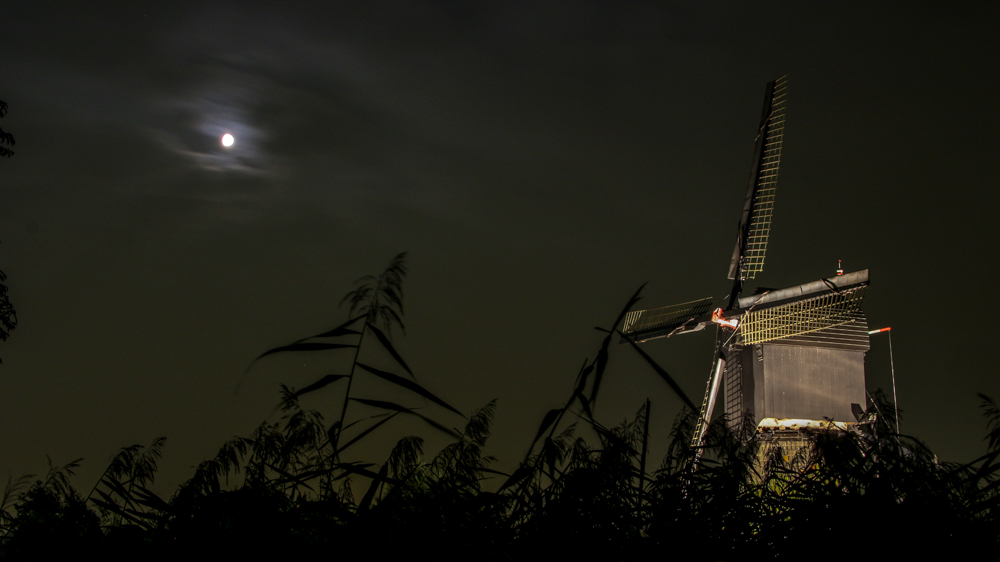
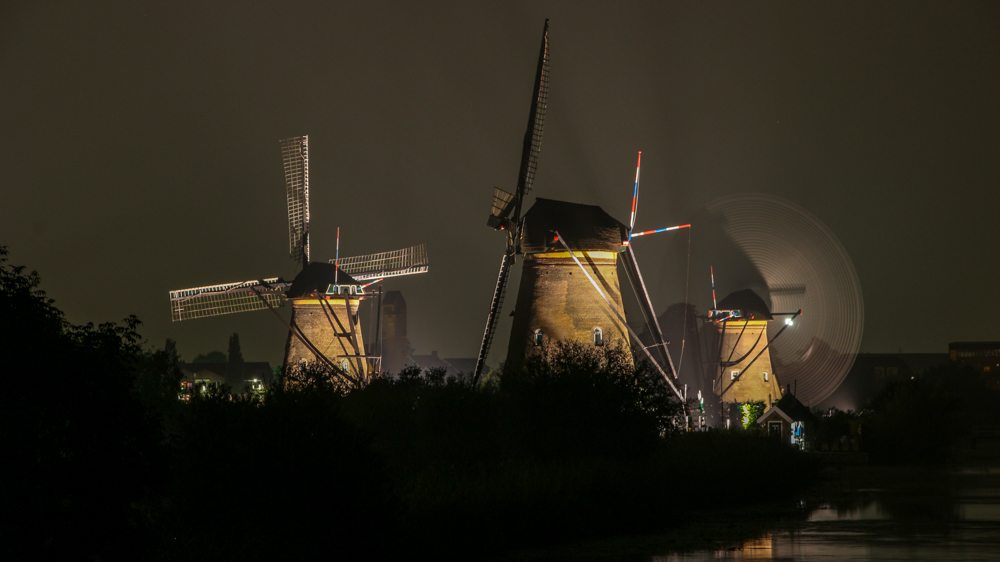
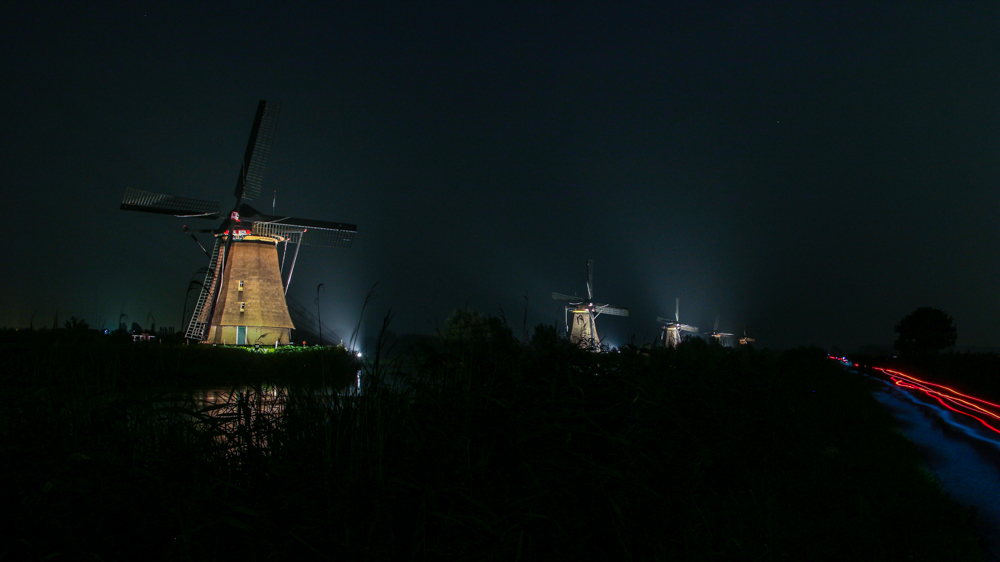
Now on to fireworks!
Fireworks Photography
This will be a short part, because most of it is the same as with the night photography (Fireworks is usually also at night, duh…). You just have to practice getting the shot at the right moment.
There is one thing you can change though, and that is the shutter speed.
To get the nice trails of the fireworks, you can set the shutter speed at 2 or 3 seconds, but you can go longer of course depending of what you want to capture, but I like 2 seconds myself.
Below are some examples of photographs taken at the fireworks show in Rotterdam, with the settings I used.
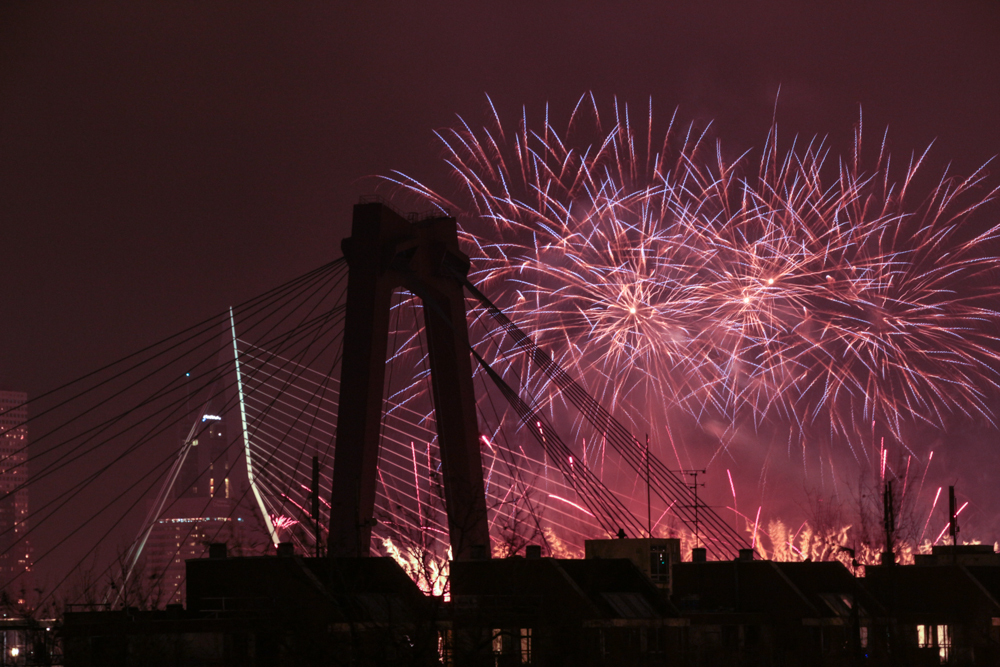
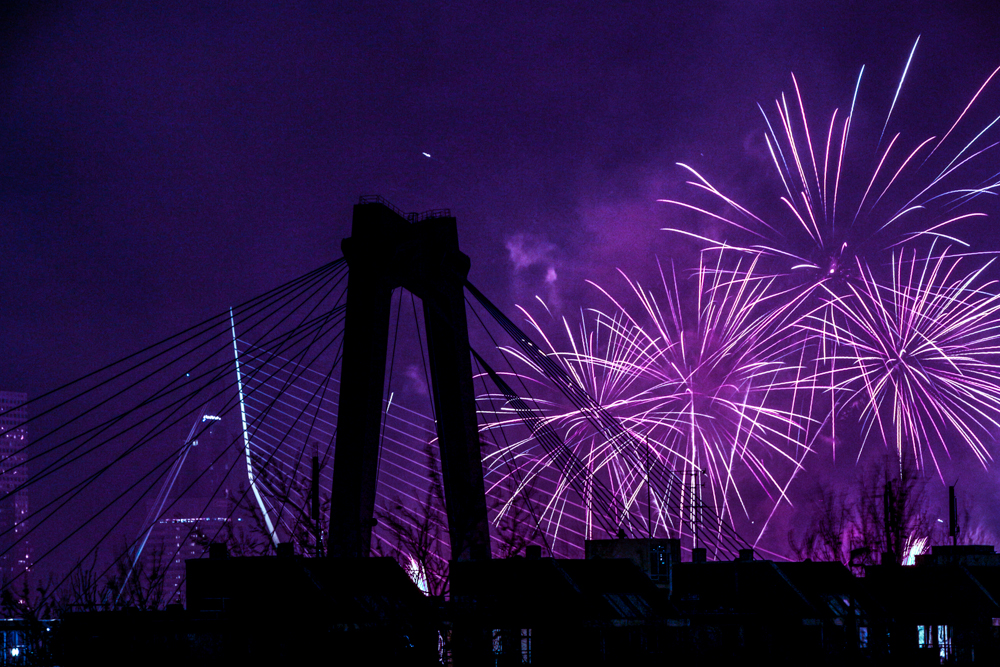
There is a trick you can do while photographing fireworks, and that is to set you shutter speed (Tv) to bulb, if your camera has that setting of course.
Now all you have to do is take the photograph of the fireworks, and after 2 or 3 seconds, cover the lens of your camera until the next fireworks go off and remove the cover and expose the lens another 2 or 3 seconds. This gives a nice effect where you can see multiple displays of fireworks in one photograph. So try it out!
You can also use the bulb setting, where you press the shutter, and release after a few seconds, to get a nice shot. That way, you can really time your shots, but this will take some practice.
Anyway, I hope to have helped out someone with this small tutorial on night and fireworks photography, so feel free to leave a reply in the comments.
Regards,
J.
